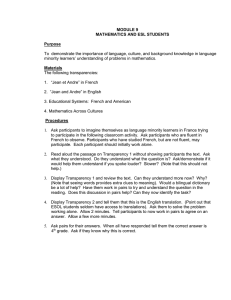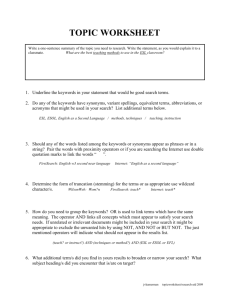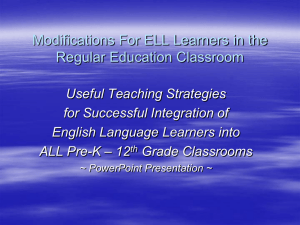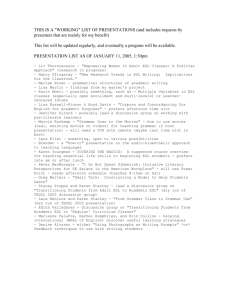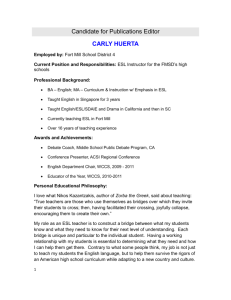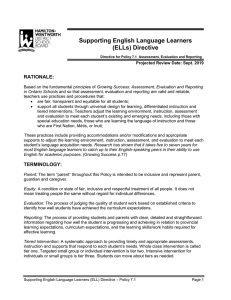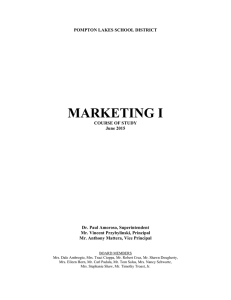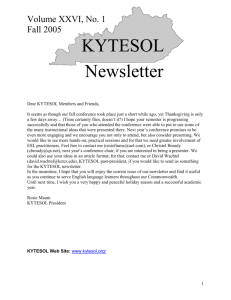Module 6 Helping ESL Students Understand Content Area Texts
advertisement
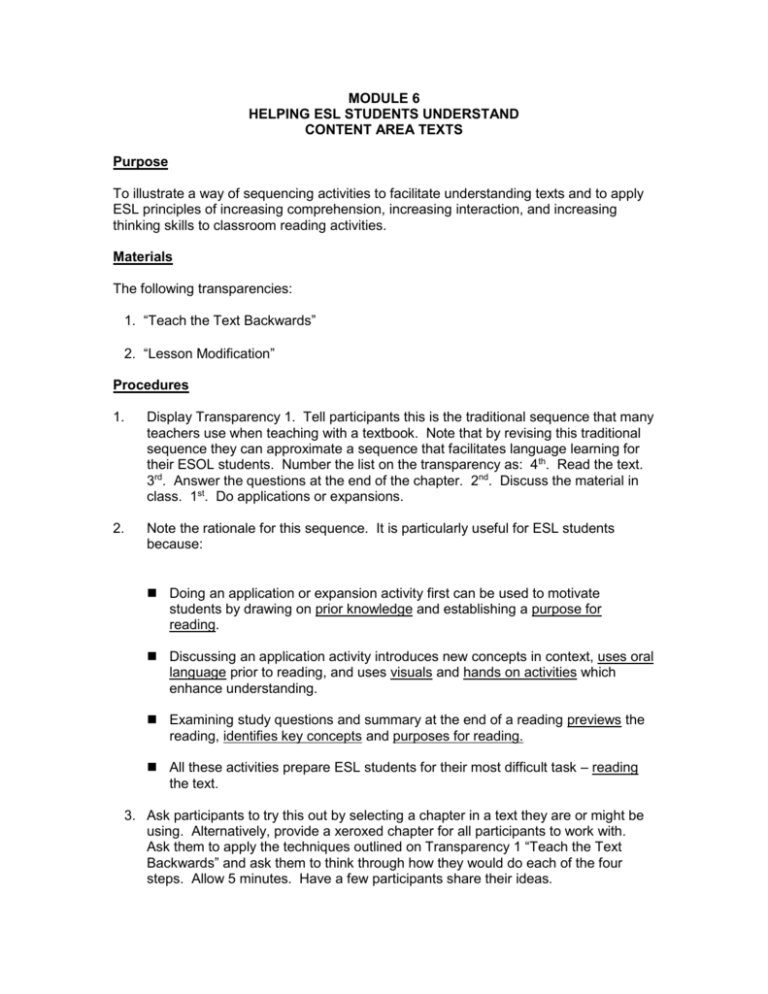
MODULE 6 HELPING ESL STUDENTS UNDERSTAND CONTENT AREA TEXTS Purpose To illustrate a way of sequencing activities to facilitate understanding texts and to apply ESL principles of increasing comprehension, increasing interaction, and increasing thinking skills to classroom reading activities. Materials The following transparencies: 1. “Teach the Text Backwards” 2. “Lesson Modification” Procedures 1. Display Transparency 1. Tell participants this is the traditional sequence that many teachers use when teaching with a textbook. Note that by revising this traditional sequence they can approximate a sequence that facilitates language learning for their ESOL students. Number the list on the transparency as: 4th. Read the text. 3rd. Answer the questions at the end of the chapter. 2nd. Discuss the material in class. 1st. Do applications or expansions. 2. Note the rationale for this sequence. It is particularly useful for ESL students because: Doing an application or expansion activity first can be used to motivate students by drawing on prior knowledge and establishing a purpose for reading. Discussing an application activity introduces new concepts in context, uses oral language prior to reading, and uses visuals and hands on activities which enhance understanding. Examining study questions and summary at the end of a reading previews the reading, identifies key concepts and purposes for reading. All these activities prepare ESL students for their most difficult task – reading the text. 3. Ask participants to try this out by selecting a chapter in a text they are or might be using. Alternatively, provide a xeroxed chapter for all participants to work with. Ask them to apply the techniques outlined on Transparency 1 “Teach the Text Backwards” and ask them to think through how they would do each of the four steps. Allow 5 minutes. Have a few participants share their ideas. Display Transparency 2 “Lesson Modification”. Have participants review the modifications they thought about in 3 above. Have them write a brief description of the modifications in terms of: Doing the applications: insuring relevance, tapping prior knowledge. Discussing Main Points: using oral language, visuals, hands on. Examining Study Questions: doing a summary, indentifying key concepts. Reading Text: length reduction, small group discussion. Allow about 15 minutes for this. 4. After everyone is finished, each participant will describe modifications to a partner who will provide feedback on how well the modifications fulfill the three principles of increasing comprehension, increasing interaction, and increasing thinking skills. 5. Ask participants to share selected aspects of their modifications with the whole group. Further reading Brisk, Maria Estela and Margaret M. Harrington. 2000. Literacy and bilingualism: A handbook for all teachers. Mahwah, NJ: Lawrence Erlbaum Associates, Inc. Center for Applied Linguistics and Delta Systems Company. 1999. Enriching content classes for secondary school students: Study guide and Trainer’s manual. Washington, D.C.: Author. New York State Education Department. 2000. The teaching of language arts to limited English proficient/English language learners: A resource guide for all teachers. Albany, NY: Author. Nieto, Sonia. 2002. Language, culture, and teaching: Critical perspectives for a new century. Mahwah, NY: Lawrence Erlbaum Associates, Inc. Peregoy, Suzanne F. and Owen F. Boyle. 2000. Reading, writing and learning in ESL: A resource book for K-12 teachers. New York: Longman. Portions of this module are adapted from Enriching content classes for secondary ESOL students (pp 206-233, passim) by Judith H. Jameson, 1999. Washington, D.C. and McHenry, IL: Center for Applied Linguistics and Delta Systems Co., Inc. Adapted with permission
